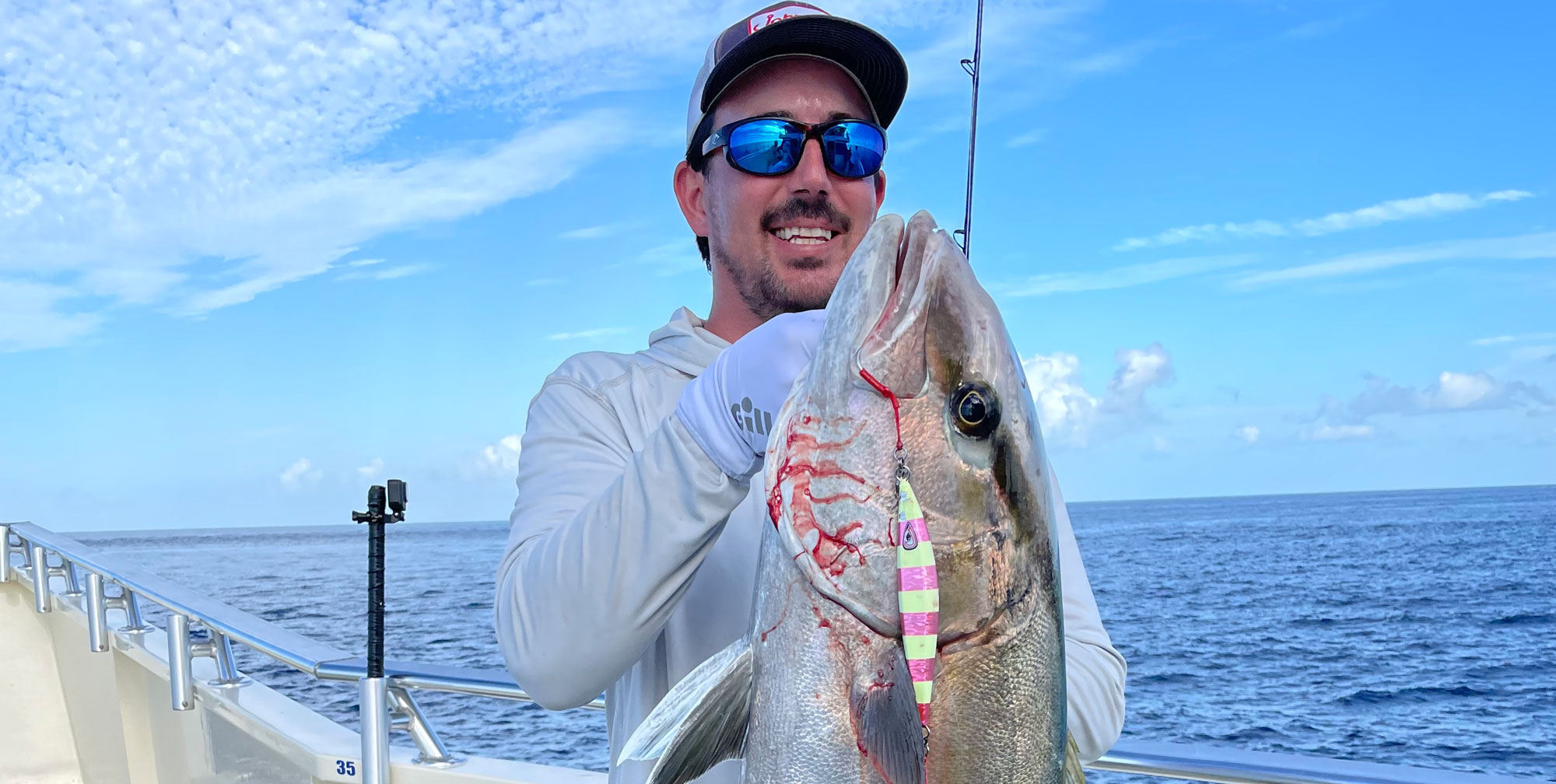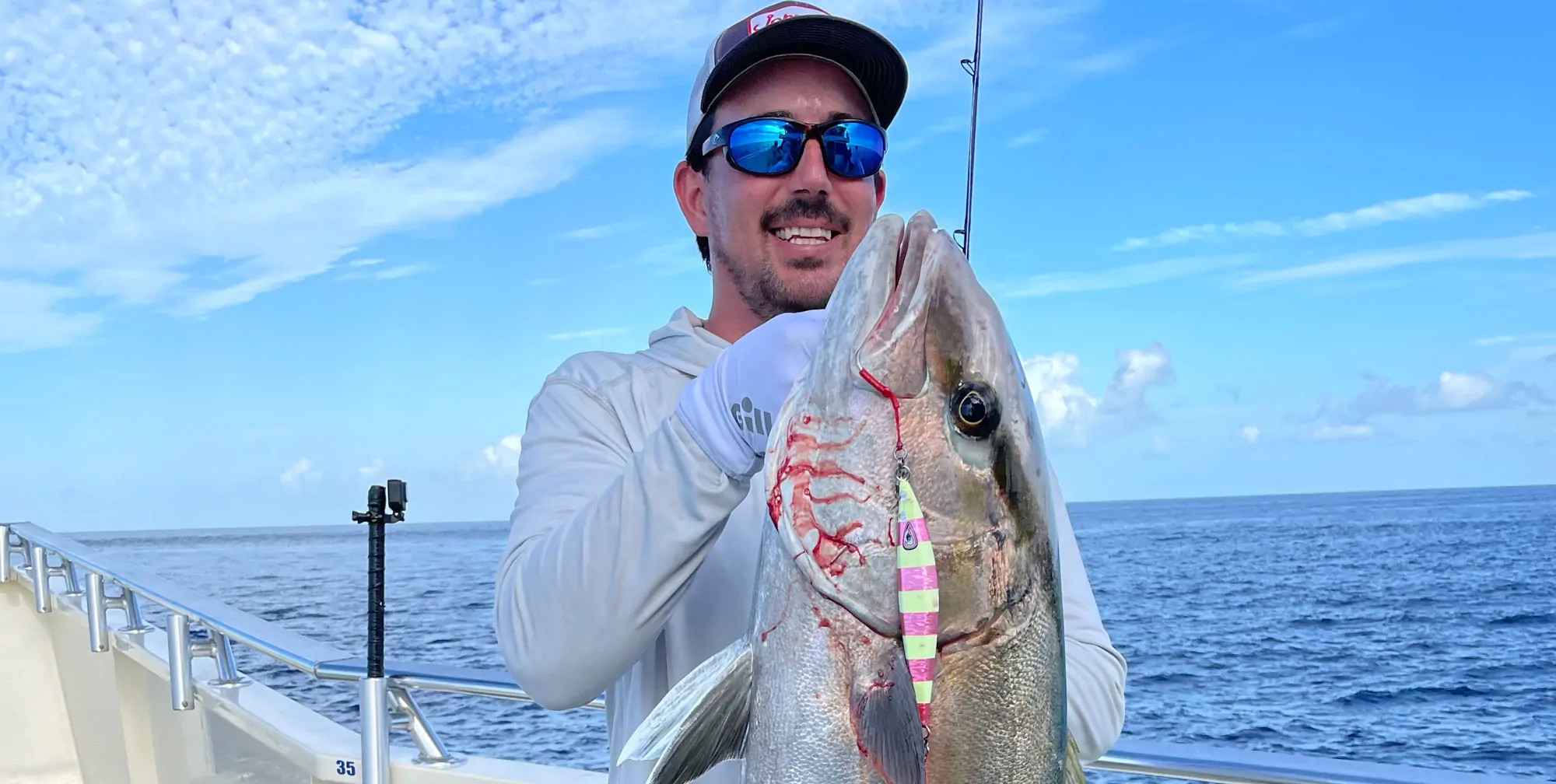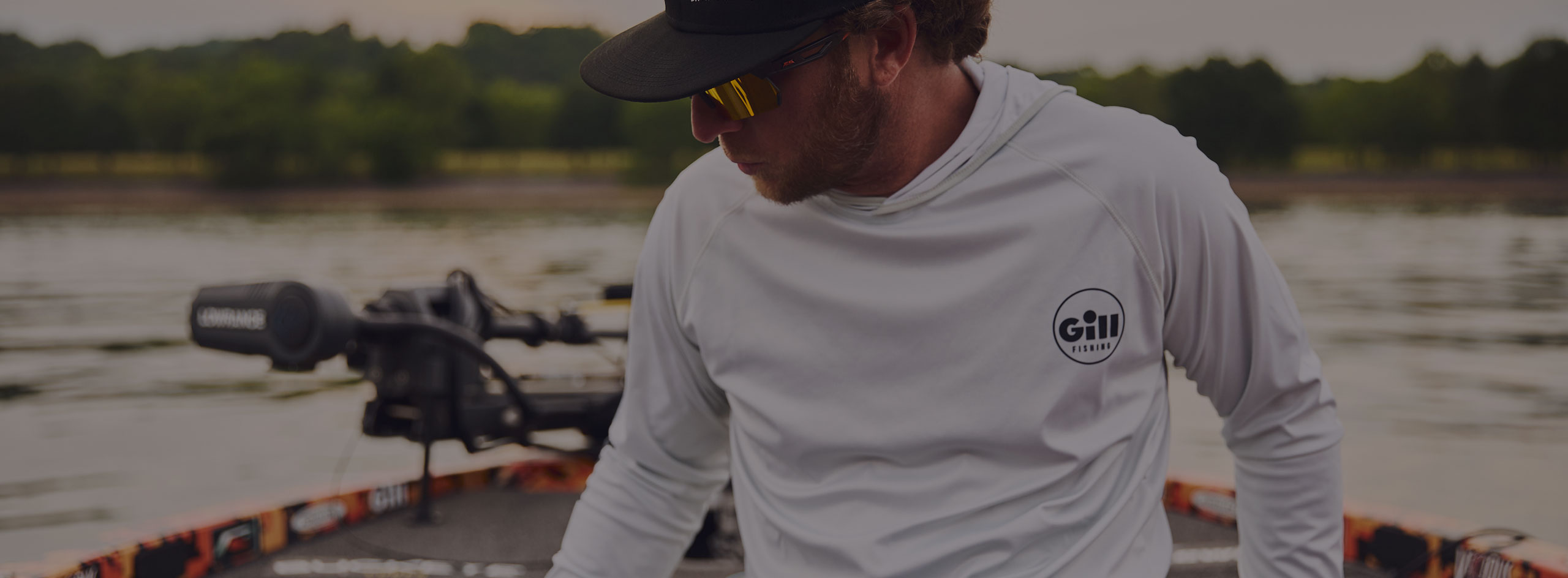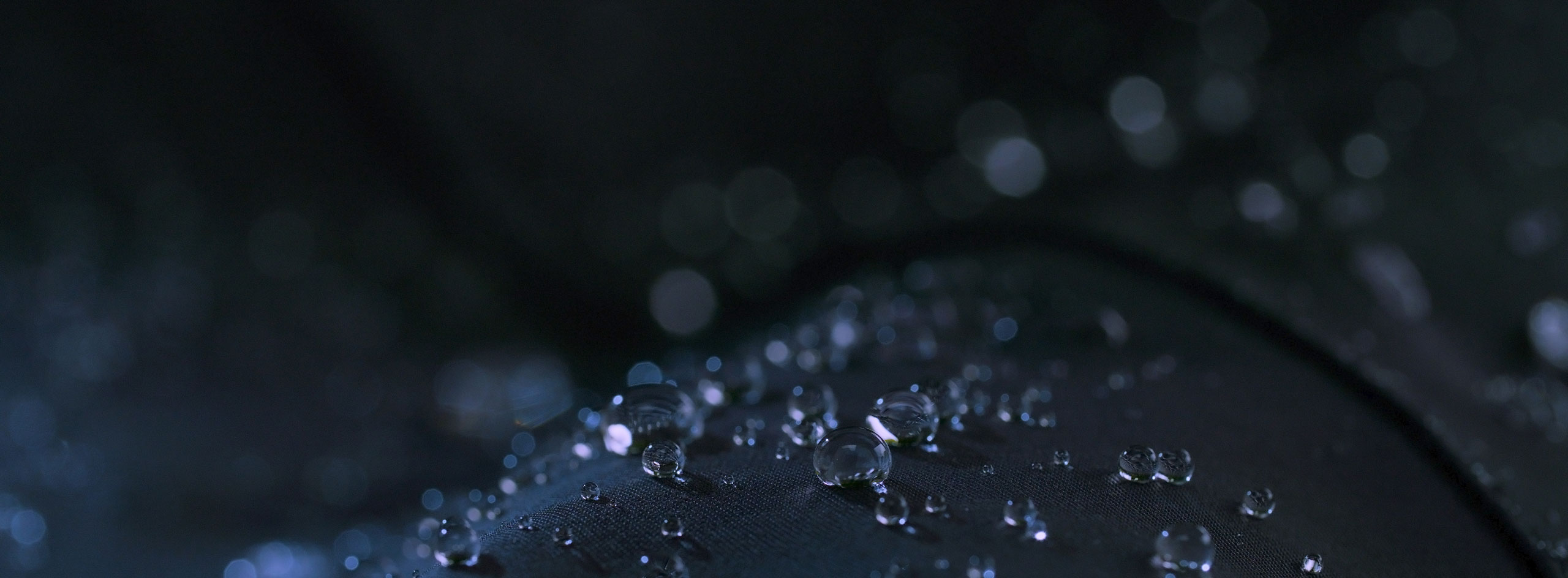Learn why some anglers are swearing off bait and catching nearly every species of fish with nothing but a painted chunk of metal.
A new style of fishing is gaining a cult following for its ability to catch nearly every saltwater fish–and a surprising variety of freshwater fish, too –with lightweight rods and metal jigs.
“Everything will eat a slow-pitch jig. I’ve caught everything from a trumpet fish to yellow fin tuna. I’ve even seen guys in freshwater jigging in deep water for bass,” says John Steadham, a diehard slow-pitch angler and co-founder of Johnny Jigs, a tackle company based in Pompano Beach, Florida that specializes in slow-pitch gear.
Although slow-pitch jigging can be deadly effective, learning the sport can be daunting, as it requires specialized equipment and unconventional techniques. That’s why Gill Fishing teamed up with Johnny Jigs to create a slow-pitch jigging guide with all the information you’ll need to catch fish with slow-pitch jigs as soon as your first trip.
What is SPJ?
Slow-pitch jigging -or SPJ, for short -originated in Japan in the Nineties. A slow-pitch jig is a center-weighted metal jig that slowly flutters as it falls, which mimics the action of a wounded bait fish and triggers an instinctive feeding response in predatory fish. Japanese anglers discovered that SPJ was not only as effective as live or cut bait, but also highly effective on heavily pressured fish that were difficult to catch with traditional methods.
The secret eventually got out, and early American pioneers of the sport couldn’t believe how effective it was on saltwater species. SPJ is primarily a bottom fishing tactic and is downright deadly on snapper and grouper in 60 to 200 feet of water, as well as species like tile fish, snowy grouper, and barrel fish in deep-drop territory. Slow-pitch jigs can also be worked in the middle of the water column for tuna, which can’t resist a jig. Most fish won’t turn one down, and Steadham and his crew have caught just about everything on a jig, including wahoo and sailfish.
Steadham caught the slow-pitch bug on a fishing trip with Chris Doyle, another co-founder of Johnny Jigs, during a multi-day voyage on the Yankee Captain, a prolific head boat that fishes out of Key West. While Steadham and Doyle brought aboard several large coolers full of the bait they’d need for the excursion, they watched another angler on the boat out fish everyone with nothing but jigs.
SPJ has several benefits over bait fishing. For starters, it’s simpler and cleaner, as there’s no dealing with messy bait. In the right hands, it can be as effective—or more effective, depending on the conditions —on bottom fish, and jigs also trigger strikes from pelagic fish in the middle of the water column while anglers are retrieving their lures.
Finally, many anglers find it more exciting than simply soaking bait. “I feel like it’s a lot more sporting,” Doyle say’s “I’m actively fishing, and I’m constantly thinking about the conditions, the drift, and my technique. We’ve found a lot of fly fisherman take a liking to slow pitch because of the similarities.”
It’s all in the fall
The key to slow-pitch jigging is breathing life into a hunk of metal, and mastering this is nothing short of an art.
The presentation is broken down into two steps: flicking the jig upwards in the water by slowly lifting the rod, also known as pitching, and letting it free fall without any resistance or interference. The latter step is crucial, as the fluttering action during the fall is what triggers most strikes.
“When I’m jigging, I’m thinking about bringing that jig to life and allowing it to perform with erratic movements, and I’ll vary between different length pitches to accomplish this,” Doyle says.
To get the proper flicking action, anglers use specialized rods made from lightweight blanks with a slow, parabolic action. This allows the rod to fully load against the weight of the jig as the angler lifts and imparts the erratic flicking action on the jig before it falls and flutters, which better mimics a wounded bait fish.
Doyle and Steadham typically jig from a drifting boat, working their jigs while carefully watching the fish finder to ensure they’re fishing over productive ground, like ledges, live bottom or artificial wrecks. When they’ve passed over the spot, they’ll reposition the boat up current and drift again.
Staying vertical with the jig is crucial to making a good presentation, as this allows you to maintain control of the jig. If the current causes the jig to drift too far and puts more scope in your line, you’ll need to adjust the weight or profile of your jigs.
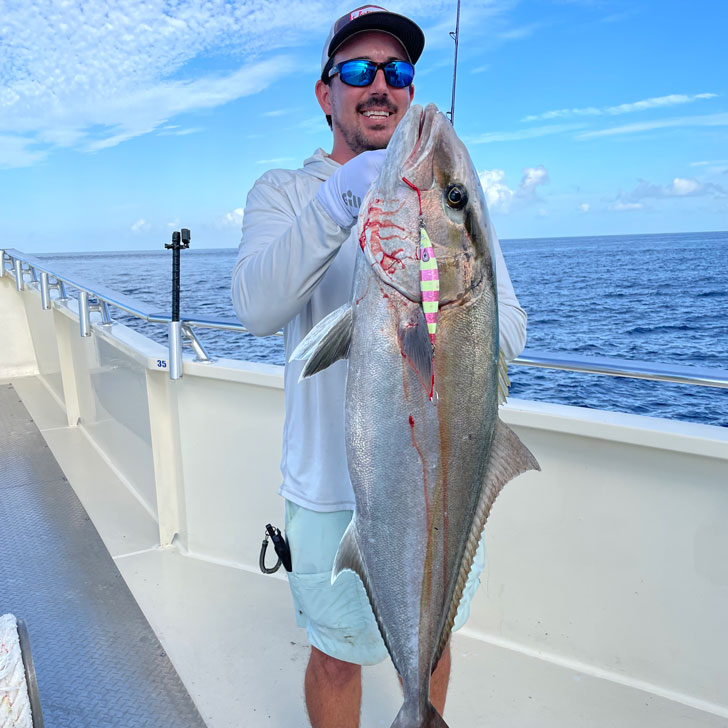
Getting Outfitted
Once upon a time, slow-pitch anglers had to special order equipment from Japan. Now, several companies, including Johnny Jigs, offer custom high-quality tackle tailored for slow-pitching jigging.
Doyle says the most important piece of gear is the rod. He recommends Johnny Jigs Pro Jigger Plus. For anglers looking for an entry level option should consider the Temple Reef Elevate2.0, Doyle says.
The ideal slow-pitch reel is a lightweight, narrow-spooled conventional reel with a high gear ratio, which retrieve slots of line with each crank. Steadham’s go-to reel is an Accurate BV-500N-SPJ, while Shimano’s Torium 16HG is a fine and affordable choice.
Reels should be spooled with lightweight braided line. Anglers fishing in shallow water can use 30-pound test, while deep-water anglers (500 feet or more) will need to lighten to 20-pound or 15-pound test line, as the thinner line provides less resistance and better cuts through the water, which is key to staying vertical. Doyle uses a top shot of 20-pound fluorocarbon leader. If you’re fishing where you’ll likely encounter big grouper, he recommends a heavier leader to avoid getting rocked up.
Finally, you need to pick a jig. Slow-pitch jigs are available in different weights, shapes and colors. Weight and shape are matched to the water depth and current. You want to fish as light a jig as possible while maintaining a vertical presentation. Generally speaking, Doyle advises using one gram of jig for every 10 feet of water. However, if you’re fishing in swifter current, you may have to go heavier.
Jigs are available in two shape styles: wide and short, and long and skinny. The wider jigs have a better flutter action, but the larger profile makes them more difficult to effectively fish in deeper water or swifter currents. In those conditions, you’ll need to switch to a narrower jig that slices through the water.
The last consideration for jigs is color. Doyle says he doesn’t know if fish see color at deeper depths, but he knows he catches more fish with holographic foil finishes. Every angler swears certain colors are more productive on certain fish, and of course, Doyle has his own theories.
“We think the foil finish attracts attention from the flicker of sun, and it looks scaly. In our experience, the pinks and chartreuses catch snapper, while red and gold jigs catch grouper. Tuna will eat anything,” Doyle says.
Whether you want to learn a new skill or are looking to find an edge on pressured fish, slow-pitch jigging is a highly effective technique to add to your repertoire. For more tips or to see everything that can be caught on a piece of metal, check out the Johnny Jigs YouTube Channel.
